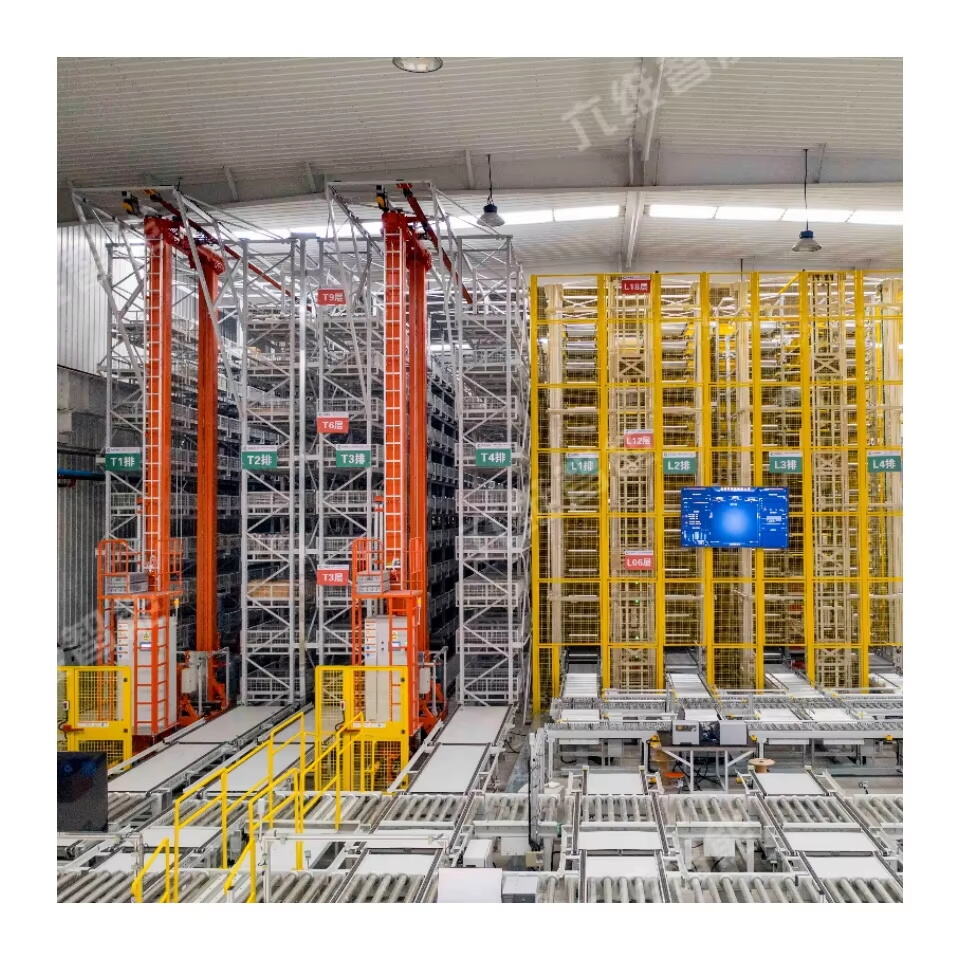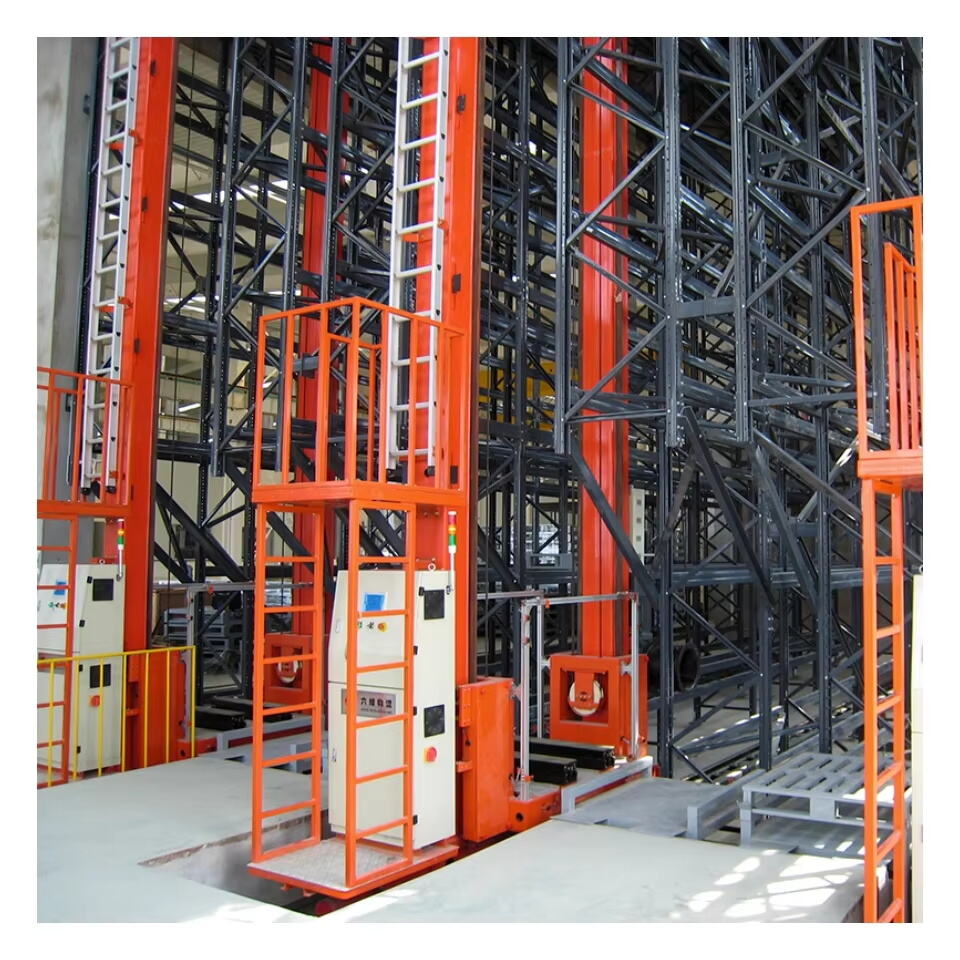Understanding Industrial Storage Load Requirements
In modern warehousing and industrial storage, determining the correct heavy duty rack load capacity is crucial for both operational efficiency and safety. Whether you're managing a large distribution center or organizing a manufacturing facility, the ability to safely store and access materials depends entirely on choosing racks with appropriate load capacities. This comprehensive guide will explore everything you need to know about heavy duty rack load capacities, ensuring you make informed decisions for your storage solutions.
Fundamental Aspects of Load Capacity
Weight Distribution Principles
When considering heavy duty rack load capacity, understanding weight distribution is paramount. Each rack system is designed to handle specific load patterns, and proper distribution ensures optimal performance. The total weight capacity isn't just about the maximum load - it's about how that load is spread across the entire structure. Uniform distribution typically allows for higher total capacity, while uneven loading may require reduced overall weight limits.
Modern racking systems incorporate sophisticated engineering principles to maximize load-bearing capabilities while maintaining structural integrity. The relationship between beam levels, upright frames, and cross bracing all plays a vital role in determining the final load capacity. Engineers factor in both static and dynamic loads, considering not just the weight of stored items but also the forces exerted during loading and unloading operations.
Material and Construction Impact
The materials used in rack construction significantly influence heavy duty rack load capacity. High-grade steel, particularly those with advanced metallurgical properties, provides superior strength-to-weight ratios. The thickness of the steel, known as gauge, directly affects the load-bearing capability of both beams and uprights.
Manufacturing processes, including welding techniques and coating applications, also play crucial roles in determining final load capacities. Quality control during production ensures consistency in load-bearing capabilities across all components. The use of reinforced connections and properly designed base plates further enhances the overall structural integrity.

Safety Standards and Compliance
Regulatory Requirements
Industrial storage systems must adhere to strict safety standards regarding heavy duty rack load capacity. Organizations such as OSHA and various international standards bodies provide comprehensive guidelines for rack safety and load management. These regulations cover everything from initial installation to ongoing maintenance and regular inspections.
Compliance with these standards isn't just about meeting legal requirements - it's about ensuring workplace safety and protecting valuable inventory. Regular load capacity audits and structural inspections help maintain system integrity and identify potential issues before they become critical problems.
Safety Factor Considerations
Professional engineers incorporate safety factors into heavy duty rack load capacity calculations. These factors provide a margin of safety beyond the rated capacity, accounting for various real-world conditions that might affect performance. Understanding and respecting these safety margins is crucial for long-term system reliability.
Environmental conditions, such as temperature fluctuations, seismic activity, and exposure to corrosive elements, can impact load-bearing capabilities over time. Proper safety factors help ensure that racking systems maintain their integrity even under less-than-ideal conditions.
Implementation and Optimization
Load Capacity Planning
Effective planning for heavy duty rack load capacity begins with a thorough analysis of current and future storage needs. This includes considering not just the weight of stored items but also their dimensions, access requirements, and turnover rates. Advanced planning tools and software can help optimize rack configuration and capacity utilization.
Working with experienced storage solution providers ensures that your racking system is properly designed for your specific needs. They can help identify potential bottlenecks, suggest optimal configurations, and ensure that your system meets both current requirements and future growth potential.
Installation and Maintenance Protocols
Proper installation is critical for achieving designed heavy duty rack load capacity. This includes ensuring level floors, correct anchor placement, and precise alignment of all components. Professional installation teams use specialized tools and techniques to ensure that each element is properly positioned and secured.
Regular maintenance programs help preserve the intended load capacity throughout the system's lifetime. This includes scheduled inspections, prompt repair of any damage, and periodic assessment of changing load patterns or requirements. Proper documentation of maintenance activities helps track system performance and identify potential areas for improvement.
Advanced Considerations and Future Trends
Technology Integration
Modern warehouse management increasingly relies on technology to monitor and optimize heavy duty rack load capacity. Load sensors, structural monitoring systems, and automated inventory management tools provide real-time data about system performance and utilization. These technologies help prevent overloading and ensure optimal use of available capacity.
The integration of artificial intelligence and machine learning algorithms is revolutionizing how we approach rack load management. These systems can predict maintenance needs, suggest optimal load distributions, and help prevent potential structural issues before they occur.
Sustainability and Efficiency
Contemporary approaches to heavy duty rack load capacity increasingly consider environmental factors and energy efficiency. This includes using recycled materials, implementing energy-efficient handling systems, and designing for maximum space utilization. Sustainable practices not only benefit the environment but often lead to improved operational efficiency and reduced costs.
The future of industrial storage systems points toward even more sophisticated approaches to load capacity management. This includes the development of smart materials that can adapt to changing loads, more efficient use of vertical space, and integration with automated handling systems.
Frequently Asked Questions
How is Heavy Duty Rack Load Capacity Calculated?
Heavy duty rack load capacity is calculated by considering multiple factors including the strength of materials, structural design, safety factors, and intended use patterns. Engineers analyze both the individual component capacities and the system as a whole, incorporating safety margins and compliance with relevant standards.
What Affects the Long-term Performance of Rack Load Capacity?
Several factors influence long-term performance, including environmental conditions, usage patterns, maintenance practices, and the quality of initial installation. Regular inspections, proper load distribution, and prompt repairs of any damage help maintain the designed capacity over time.
When Should Load Capacity Be Reassessed?
Load capacity should be reassessed when making any significant changes to storage requirements, after any structural damage occurs, during major facility renovations, or at regular intervals as part of a comprehensive maintenance program. Regular assessments help ensure continued safe operation and optimal performance.

